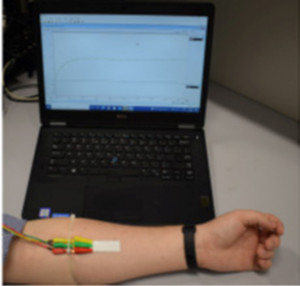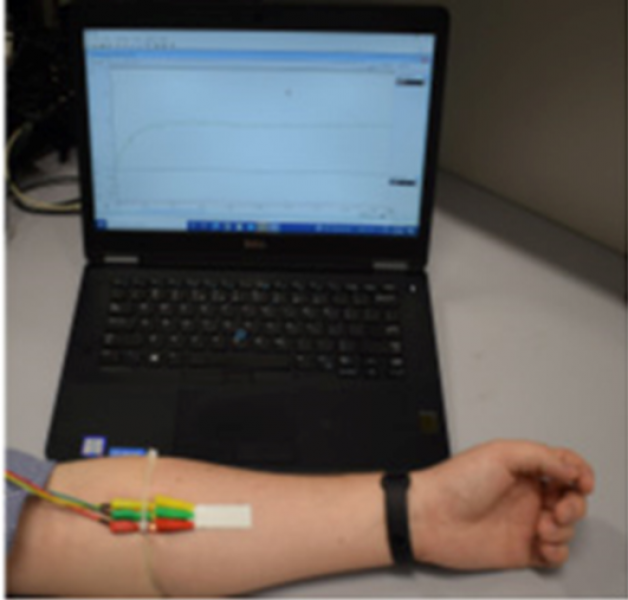In one of the latest issues of the prestigious journal titled Biosensors and Bioelectronics (Impact Factor - 10.618), which is related to the research of the new biosensors, a group of scientists from the NanoBioMedical Center (Adam Mickiewicz University in Poznan) presented the results of their research devoted to a new type of glucose sensor. The study entitled "MXene nanoflakes decorating ZnO tetrapods for enhanced performance of skin-attachable stretchable enzymatic electrochemical glucose sensor" was devoted to the creation of a skin-attached flexible enzyme sensor based on zinc oxide (ZnO-TP) tetrapods, which were combined with a new class 2D materials - transition metal carbides - known as MXenes. This research is based on continuously testing the glucose level in sweat due to the electroanalysis process.
The materials used to produce this sensor (ZnO (TPs) and MXene (Ti3C2Tx)) were obtained in the laboratory using facile and inexpensive physicochemical methods. Namely, the ZnO tetrapods were obtained by the "oxidative-metal-vapor-transport" method. This method is based on the thermal evaporation of powdered zinc (Zn) in air at high temperature due to its oxidation. On the other hand, MXenes were obtained by etching the Ti3AlC2 ternary carbide (MX phase) with a solution of lithium fluoride (LiF) in hydrochloric acid (HCL) using the MILD method. The synthesis of the appropriate composites was carried out in a two-stage production process. The previously obtained MXene petals were used to decorate the ZnO tetrapods. These catalytically active ZnO TP/MXene composites were deposited on a stretchable transducer electrode for qualitative glucose analysis. The sensors made in this way were then tested on glucose solutions in phosphate-buffered saline (PBS), and in artificial and human sweat. The obtained results showed that the produced biosensors showed high sensitivity of 27.87 μA mM-1 cm-2 and 29.88 μA mM-1 cm-2 for PBS and artificial sweat tests, respectively. The structural, chemical, electrochemical, and optical properties of the produced composites were also analyzed, as well as the long-term stability of the biosensors (the sensor response was stable within 10 days of testing). Additionally, the produced electrode shows mechanical stability to elongation by 30% with a slight change of the detection parameters.
In conclusions, biosensors proposed by scientists from AMU, based on a stretched and glued to the skin electrode made of ZnO TP/MXene composites, present a perspective approach to non-invasive, continuous monitoring of glucose concentration in medical applications.


